Following a surprise rate hold in July, economists broadly agree that a hurdle has been removed for an August rate cut after the seasonally adjusted unemployment rate rose to 4.3 per cent in June – the highest since November 2021.
According to data released on Thursday by the Australian Bureau of Statistics (ABS), after being stuck at 4.1 per cent for five months, the unemployment rate rose 0.2 percentage points, driven by a 34,000 increase in the number of unemployed people.
Employment, on the other hand, rose by 2,000 people this month, following a fall of 1,000 in May, and is up 2.0 per cent compared to June 2024. Part time employment grew by 40,000 people, offset by a 38,000 person fall in full-time employment.
The employment-to-population ratio remained at 64.2 per cent and the participation rate rose to 67.1 per cent.
KPMG chief economist Brendan Rynne said the key driver of the result was a 38,000 fall in full-time employment, offset by a 40,000 rise in part-time roles, a modest net gain of 2,000 jobs that was outweighed by an additional 34,000 people entering the labour force.
“While quarterly inflation data is still a week or so away, today’s data will reinforce the weakness that is continuing within the private side of the Australian economy, and even by itself should be enough for the RBA to drop the cash rate at its next meeting,” Rynne said.
Similarly, senior economist at the CBA, Belinda Allen, suggested that even with a much higher-than-expected trimmed consumer price index (CPI) print, “the RBA should deliver a 25 bp cut”.
Earlier this month, the Reserve Bank’s surprise decision to keep rates on hold led Allen to declare that “this is a new RBA”.
“The board is asserting its independence. Votes are taken and published. Forward guidance is limited given the board make the decision, not RBA staff. The old days of massaging market pricing towards the likely outcome has gone,” Allen said at the time.
On Thursday, the senior economist explained that the unemployment rate has now reached both the CBA’s and the RBA’s forecast peak for the cycle.
“The RBA Monetary Policy Board next meet 11–12 August and the labour force print today is the last before this meeting,” Allen said.
“In the July meeting, the board noted it wanted to see the outcome of the Q2 25 CPI print before next cutting interest rates. A weaker labour market report, we expect, lifts the tolerance for an upside surprise to the inflation data,” she added.
Markets expect a trimmed mean CPI of 0.7 per cent, slightly above the RBA’s implied forecast of 0.6 per cent, but a material upside surprise appears unlikely, Allen said.
“An August rate cut is our base case with a follow-up in November. The clear risk sits with an additional rate cut in 2026,” she said.
Krishna Bhimavarapu, APAC economist at State Street Investment Management, similarly noted that Thursday’s employment data has thrown a “major curveball” at the RBA and raises the odds of a larger rate cut in August.
“It worries us that the unemployment rate in NSW (4.4 per cent) and Victoria (4.6 per cent) are higher than the overall rate (4.3 per cent), which rose 0.2 pp.
“Absent any upside surprise in the Q2 CPI data later this month we think there will be a reasonable possibility for a larger rate cut. We still expect the cash rate to hit 3.10 per cent by the end of this year.”
For its part, CreditorWatch said the labour force data will require the RBA to revise up its projections in the August Statement of Monetary Policy, increasing the likelihood of further interest rate cuts.
Its chief economist, Ivan Colhoun, opined that the latest print makes the RBA’s decision to focus on the lagging CPI result from the Q2 CPI “less wise” relative to trying to get ahead of a potential softening in the labour market, the other aspect of its dual mandate.
“This locks in a further interest rate cut at the August board meeting,” Colhoun said.
“Previously, I was looking for one further interest rate cut this year (apart from August), though, if more labour market indicators begin to signal softness, this opens up the risk of additional stimulus being required.
“The continuing low unemployment rate has been an extremely important underpinning to consumer spending and mortgage repayments. Thankfully at this stage, the slight rise recorded has been more about slower employment growth than actual job losses.”
VanEck’s head of investments and capital markets, Russel Chesler, added that the RBA’s “shock move” earlier this month to hold the cash rate makes Thursday’s labour force data even more critical.
But unlike his peers, and despite the unemployment print coming in above the market’s expectation, Chesler said he does not believe this alone is going to be ringing any alarm bells at the RBA.
“It is only one month of data, and with the number of job ads increasing by 1.8 per cent in June 2025 – according to ANZ-Indeed data – there is no clear indication that unemployment will increase further,” he said.
“The outcome of the quarterly CPI inflation print in two weeks will be the next vital data point that will determine whether we’ll see a rate cut on 12 August.
“The market is still pricing in two more rate cuts by the end of the year, but we consider it premature to be making this call before there is any data to support this.”
Although in the minority, Chesler said VanEck believes the RBA’s decision to hold rates this month was the right call.
“Based on the current information to hand, we think there could be one more rate cut towards the end of the year.”



